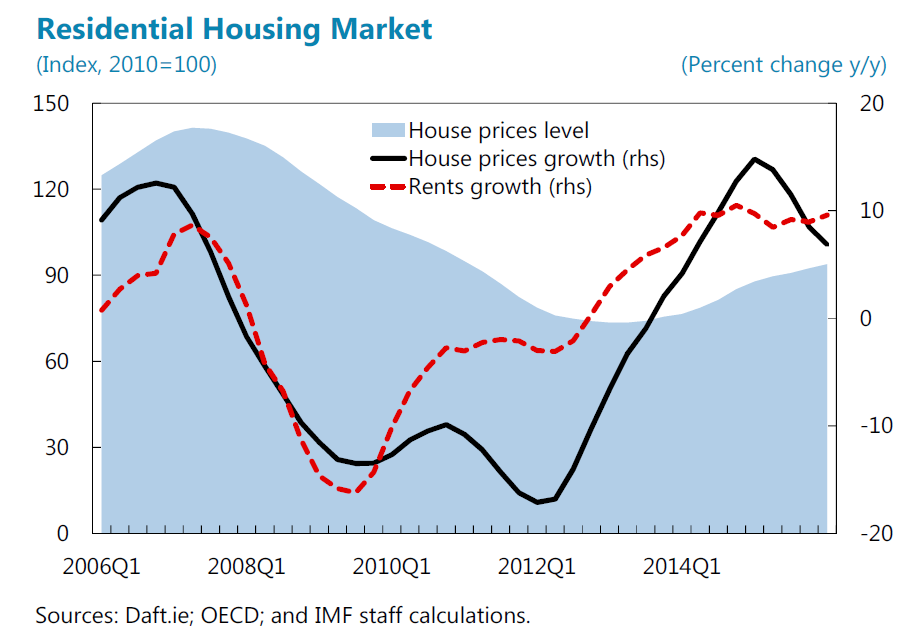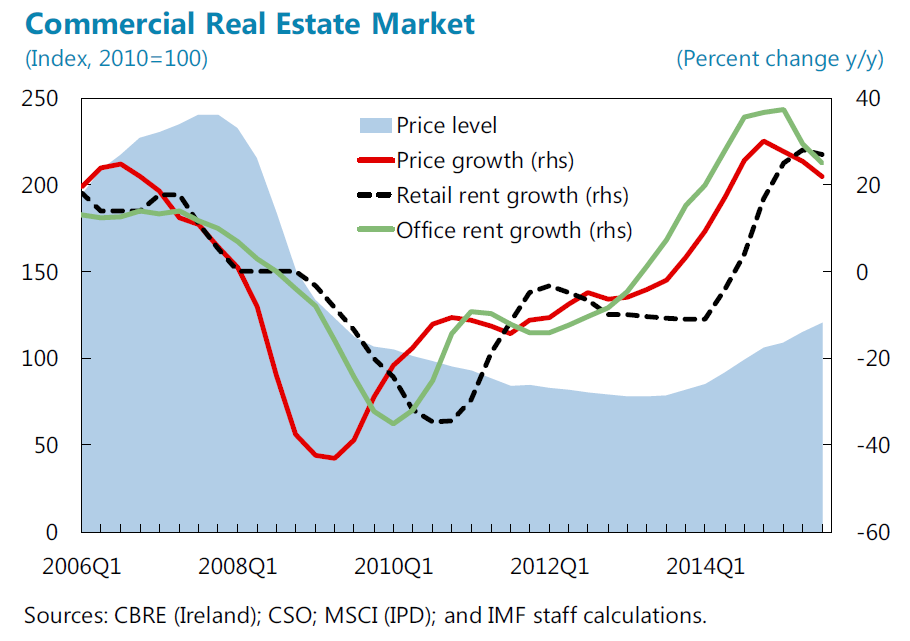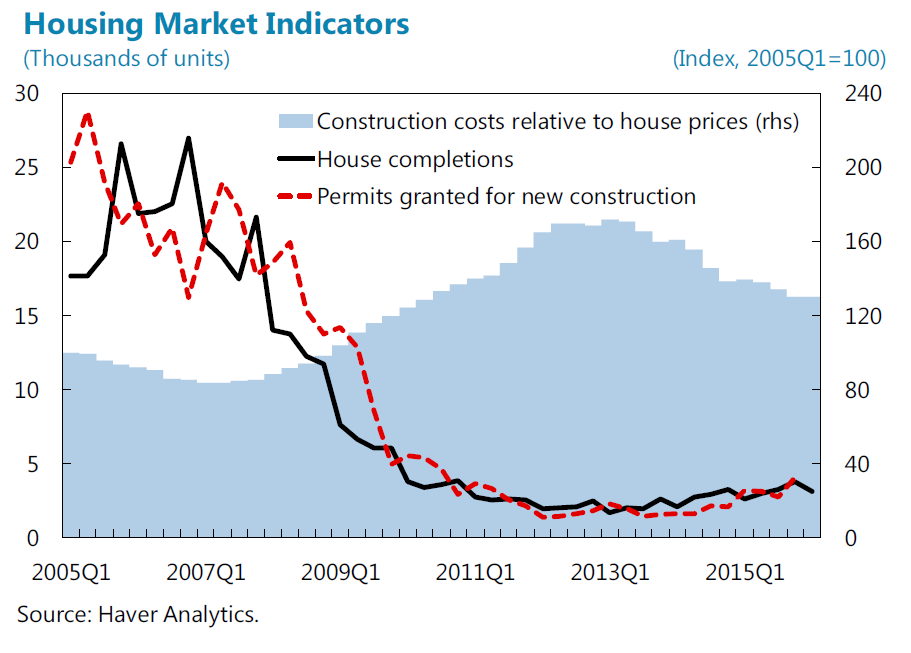Monday, August 1, 2016
Real Estate Market in Ireland
“Residential real estate (RRE) prices and rents continued to increase. Nevertheless, following the abolishment of tax exemptions on capital gains in December 2014 and the introduction of new macroprudential loan-to-value (LTV) and loan-to-income (LTI) limits in February 2015 (…), the market somewhat cooled off: RRE price growth decelerated in late 2015 and the number of mortgage approvals temporarily declined (…). [Meanwhile,] Commercial real estate (CRE) prices rose even more rapidly. Total returns of the Irish CRE sector outstripped those of other European countries, reflecting the confluence of strong equity investment largely financed by foreigners in search for high yield, and still limited new construction”, says IMF’s report on Ireland.


On housing supply, the report says that “Boosting the housing supply would help mitigate property price and rent pressures. The sluggish construction activity in recent years reflects the sector’s downsizing after the bursting of the property market bubble in 2008-09 and the ensuing limited access to finance for companies. High construction costs due to strict planning requirements have also been a factor. In response to mounting pressures in the housing market, the government introduced a package of measures in November 2015, including rebates for housing construction schemes that meet certain criteria, and new planning guidelines, which seek to reduce the building costs.16 Additionally, the National Asset Management Agency (NAMA), within its mandate, is to fund the delivery of 20,000 residential units by 2020. Staff stressed that additional policy actions should help expedite new construction, and welcomed the authorities’ intent to publish an Action Plan for Housing over the summer.”

There is also a separate report on commercial real estate.
Posted by at 5:00 AM
Labels: Global Housing Watch
Subscribe to: Posts